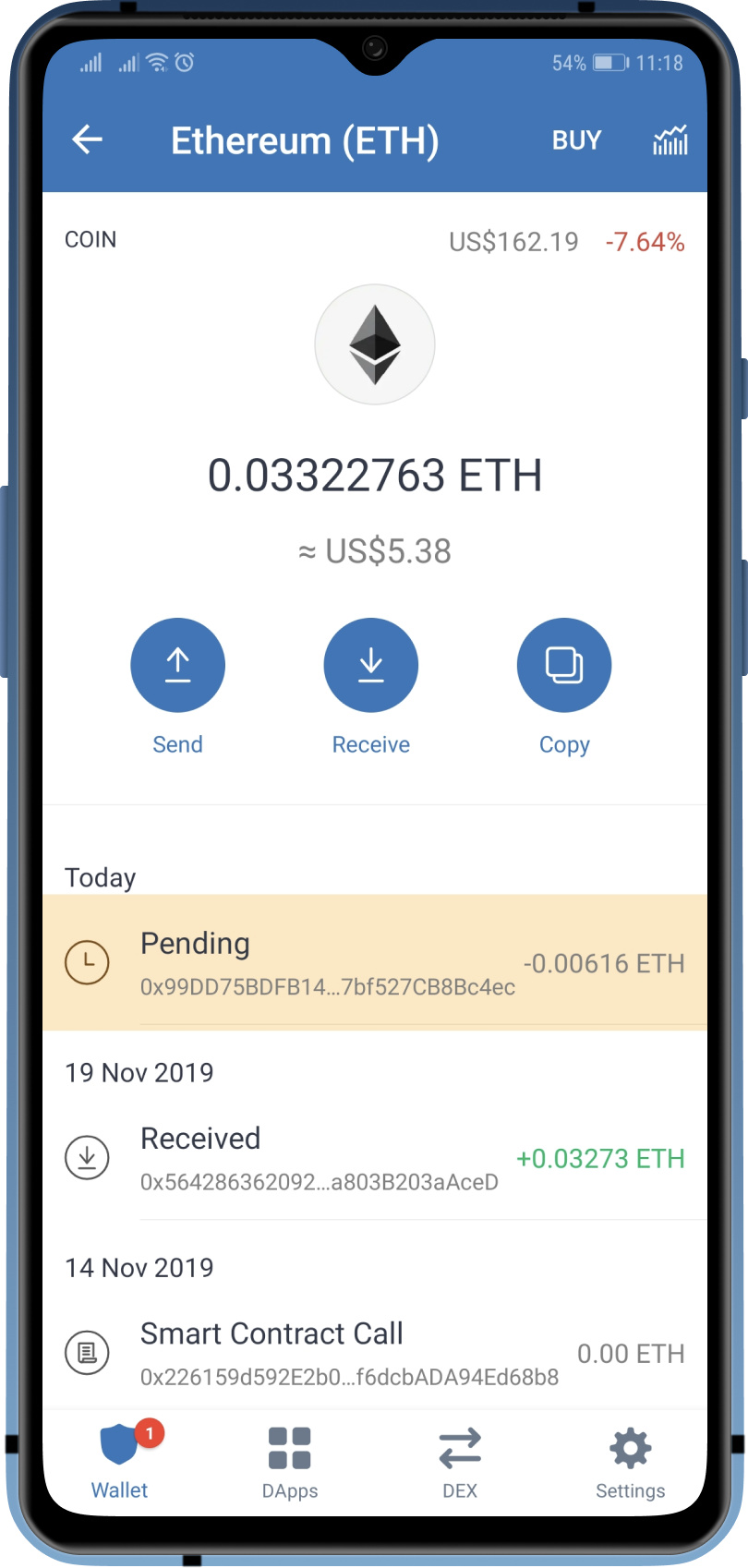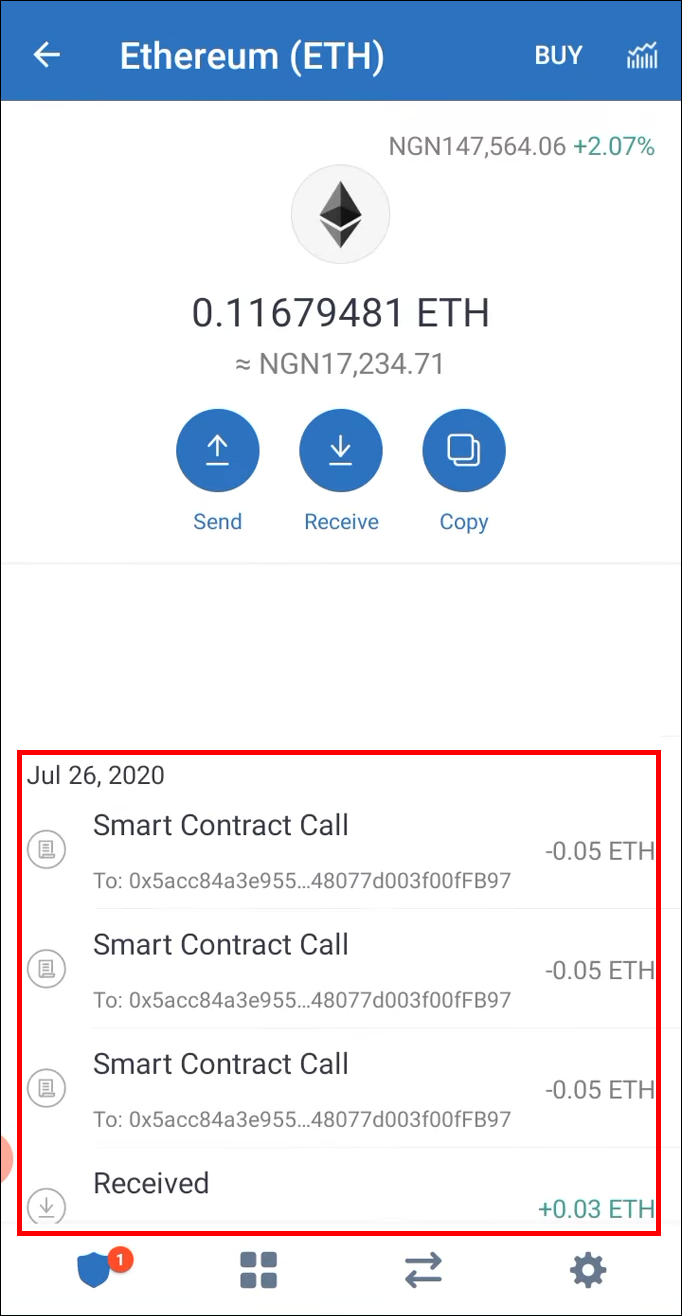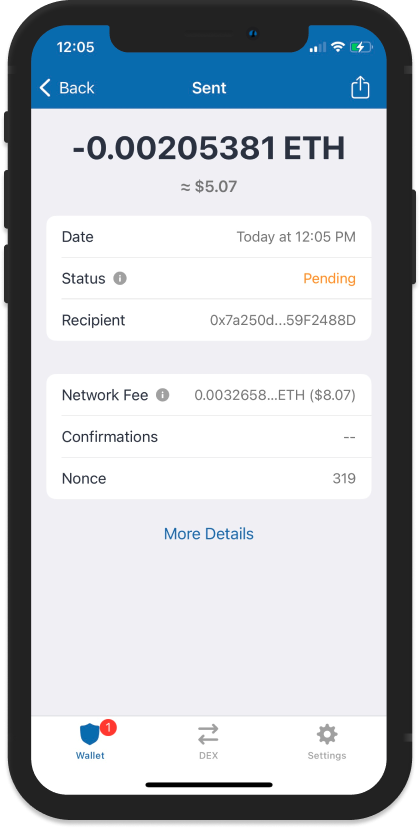To view transactions in Trust Wallet, open the app, select the cryptocurrency of interest, and tap on it. You’ll be directed to the transaction history for that specific asset, showing all incoming and outgoing transactions.

Exporting Transaction Details
Step-by-Step Guide to Exporting Transactions
- Open Trust Wallet and navigate to the wallet containing the transactions you wish to export.
- Access the transaction history for the specific cryptocurrency.
- Look for an export option, which might be represented by an export icon or found in the settings or menu options.
- Select the export option, and if prompted, choose the range of dates for the transactions you want to export.
- Confirm the export and choose the location on your device where you want to save the file.

Available Formats for Transaction Export
- Trust Wallet may allow you to export transaction details in various formats such as CSV (Comma-Separated Values) or PDF. CSV files are particularly useful for further analysis and can be easily imported into spreadsheet programs or financial software.
Managing Exported Data Securely
- Ensure that the exported transaction data is stored securely, especially since it contains sensitive information. Avoid storing the file in cloud storage or on shared devices without proper encryption.
- Regularly update your backup files following the same secure procedures to maintain a current record of your transactions.
- Consider using password protection or encryption tools for the file containing your exported transactions to add an extra layer of security.
Understanding Transaction Statuses
Deciphering Different Status Indicators
- Pending: The transaction has been broadcasted to the network but is not yet confirmed. This status indicates it’s waiting to be processed by the blockchain.
- Confirmed: The transaction has been confirmed by the network and successfully processed.
- Failed: The transaction was not processed successfully due to various possible reasons, such as insufficient gas fees or network congestion.
What to Do If a Transaction Is Pending
- Be Patient: Most pending transactions are processed once the network becomes less congested. Waiting is often the best action.
- Increase Gas Fee: If the wallet allows, you can attempt to speed up the transaction by increasing the gas fee, encouraging miners or validators to prioritize your transaction.
- Check Network Status: Sometimes, the network itself may be experiencing issues. Checking the status of the network can provide insights into whether the delay is on your end or a broader issue.
Resolving Issues with Failed Transactions
- Analyze the Error: Many wallets, including Trust Wallet, provide error messages or codes that can help identify why the transaction failed.
- Retry the Transaction: If the transaction failed due to insufficient fees or a temporary network issue, you can retry it with an adjusted gas fee.
- Consult Support: If you’re unable to resolve the issue, contacting Trust Wallet support or seeking advice from community forums can provide further guidance.
- Transaction ID/Hash: Keep the transaction ID or hash handy, as it’s crucial for troubleshooting any issues with the transaction on blockchain explorers or with support teams.
Understanding Transaction Statuses
Deciphering Different Status Indicators
- Pending: This status means the transaction has been broadcast to the network but not yet confirmed. It’s in the queue for blockchain validation.
- Success: Indicates the transaction has been confirmed and successfully recorded on the blockchain.
- Failed: Signifies the transaction was not completed. Failures can occur for various reasons, such as insufficient gas fees or execution errors.
What to Do If a Transaction Is Pending
- Wait: Sometimes, all you need to do is wait. Due to network congestion, transactions can take longer to be processed.
- Check Transaction Fee: If the fee is too low, the transaction may take longer. Some wallets allow you to increase the fee to speed up the process.
- Blockchain Explorer: Use a blockchain explorer to check the transaction status using the transaction hash.
Resolving Issues with Failed Transactions
- Understand the Reason: Check the transaction details, often available in your wallet or on a blockchain explorer, to understand why it failed.
- Retry with Adequate Fee: If the transaction failed due to low gas fees, retry it with a higher fee to ensure it gets processed.
- Contact Support: If you’re unsure why the transaction failed or how to resolve it, contact Trust Wallet’s support for assistance.

Can I view all my Trust Wallet transactions in one place?
Yes, you can view all your transactions within Trust Wallet by accessing the transaction history feature in each wallet section corresponding to different cryptocurrencies.
Can Trust Wallet be accessed on multiple devices?
Yes, Trust Wallet can be accessed on multiple devices by using your recovery phrase to restore the wallet on any new device.
How does Trust Wallet secure my private keys?
Trust Wallet secures your private keys with industry-standard encryption, stored locally on your device, not on any servers, providing you full control over your assets.
What happens to my Trust Wallet if I lose my phone?
If you lose your phone, you can restore your Trust Wallet on a new device using your recovery phrase, ensuring you do not lose access to your assets.